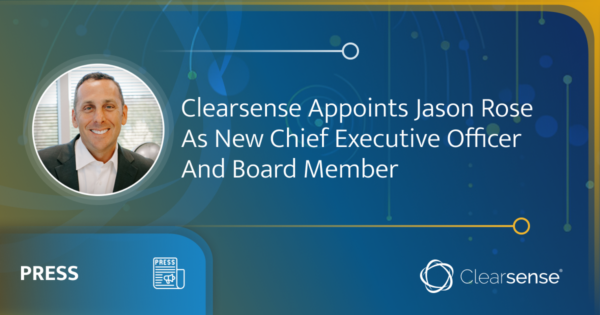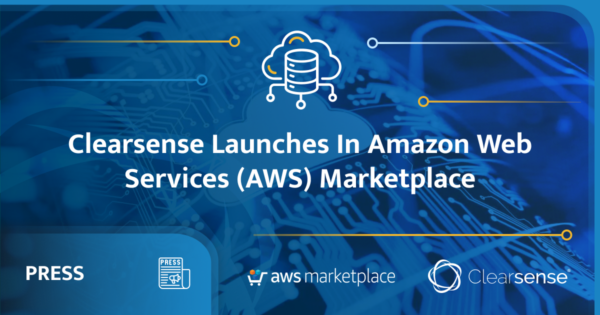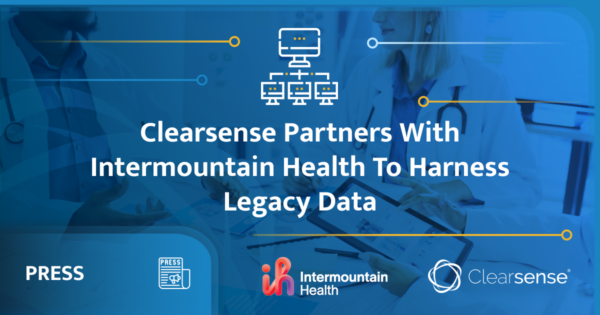
“The future of data and analytics is in our hands, and healthcare happens to be one of the latest proving grounds. While there are incredible challenges, there are also incredible opportunities to bring new advancements and efficiencies to one of our most critical industries – healthcare.”
– Charles Boicey, Clearsense Co-Founder an Chief Innovation Officer

The National Health Service (NHS) in England will shortly begin an open procurement process for a “Federated Data Platform,” a new data system designed to enable transformational healthcare change in a range of areas, including population health, waiting lists, care coordination, vaccines, and supply chain.
The Federated Data Platform will solve several items, including; population health, care coordination, and supply chain among them – through the promise of data liquidity, machine learning (ML), and Artificial Intelligence (AI). These new technological capabilities have shown promise but have led to questionable insights and even moral and ethical concerns– compounded by staffing shortages and data transparency concerns.
In our continuously evolving technical world, too often, we focus on IT efforts and forget about the people who really need the IT (and data) to work for them, like caregivers, coordinators, and schedulers. New data insights need to drive renewed confidence in data-driven decisions and actions– by those who need data most. They need a seat at the table from the beginning.
Healthcare data produced by individuals and their caregivers should be owned and used for the benefit of individuals and caregivers. While there have been incredible advancements in vaccines and other care delivery equipment through the use of data and AI, it should be the individual or caregiver who benefits from that sale in the form of improved access, reduced care costs (taxes, insurance premiums, etc.), and more innovative services. For healthcare to transform, we must include those most impacted in decision-making and outcomes.
Workforce shortages create both risk and strain
Since the pandemic’s onset, workforce management challenges have been ongoing. As businesses operated under significant restrictions throughout the COVID-19 pandemic, individual employees and leadership were forced to make new challenging decisions about the workplace, including remote workers, endless Zoom calls, and return-to-office considerations.
In healthcare, shortages could mean the difference between life and death. Delays in individuals receiving care can lead to unchecked (and potentially worsening) clinical conditions and extended deficits in quality of life. In our ever-tightening do-more-with-less operational mandates, any number of hiccups can generate delays. We saw how supply manufacturing and shipping delays led to issues with the availability of PPE, oxygen, and other critical supplies needed to allow clinicians to safely provide care to their exacting standards. These types of issues impact not only care-seeking individuals but also the morale of caregivers and care coordinators.
Transformational change requires partnership working and skills transfer – we bring different skills than our partners and the many goods and experienced folks at our customers – to co-develop scalable and acceptable applications. Simply put, together, we are far stronger.
A preliminary solution: A single source of truth
Today, critical data about patients, providers, facilities, and supplies are often maintained in different systems with different backend databases that support specific business functions. Business functions such as maintaining clinic locations, hiring providers, scheduling patient visits, conducting assessments, and administering medications (the list goes on) each have their own highly specific and complex workflows and business users. The applications were developed over time by different companies, using different technologies, and often don’t easily integrate.
To bridge these gaps, most organizations developed some version of an Enterprise Data Warehouse (EDW) to pull together data from these systems for the purposes of reporting and analytics. EDW deployments certainly helped address the basic needs for consolidated reporting but have been slow to build and hard to maintain. They don’t readily scale to modern data types and use cases requiring additional tools to be implemented, such as data lakes, interoperability tools, and more. All of these different applications and data analytics toolsets offer individual value today, but they often want to be the new “digital front door” or controller of the whole experience, thus creating and persisting the data silos.
To be successful in the new world of AI, ML, and analytics, organizations need to get all of the data aggregated into a single location to allow that data to work together to tell a story. New advancements in technology need to be utilized in such a way that they complement human decision-making while inviting collaboration. Breaking down the silos is a critical first step but not the only element to remember.
Surfacing the data will generate easy use cases such as shortening elective wait times (which NHS England has started to use recently) and managing outpatient services across many specialties with benefits for patients and staff. These successes will motivate teams to tackle broader-based population health areas such as diabetes and acute heart failure management, and this is exactly why looking at early use cases is vital for overall success.
Recommended Content
Onward and upward
All these learnings are built on a foundation of transparency in terms of where the data comes from, how it is being used, and the algorithms employed to analyze it. You will have heard that some of our health system customers call us the ‘Clear Box’ company because they can trace the data on our platform right through to its’ original source.
We are once again on a precipice in healthcare, offering an opportunity to save lives, better healthcare, and create cohesion at the beginning of great change. It is imperative we approach this next phase in our data evolution in a way that empowers individuals and caregivers so that we all may benefit. Patients are counting on us.










